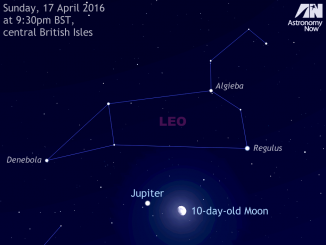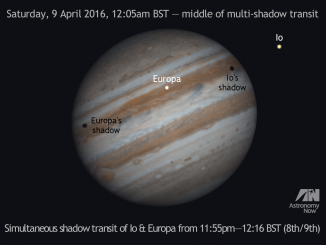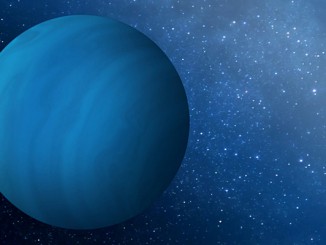
Make the most of your Jupiter observations during May
Now two months past opposition, the solar system’s largest planet, Jupiter, is highest in the UK sky before sunset and is already descending in the southwest by the time the sky is dark enough to observe it. However, there is still phenomena of the Galilean moons to see and the planet’s Great Red Spot, so make the most of your Jovian observations while you can during May.









